Dubbed MuMA Hut, this tiny wooden house was built in the Sat Bătrân part of Armeniș, a small settlement in Transylvania. The cabin allows us to immerse in the landscape in comfort and peace, without being disturbed, while it also raises the attention to environmentally friendly and sustainable development. The project was implemented based on the initiative of WeWilder’s team, on a voluntary basis, in collaboration with locals.
WeWilder is an initiative run by WWF Romania in collaboration with locals from the village of Armeniș, one of the places of Bison rewilding in the Carpathian Mountains in Romania. WeWilder offers a series of sustainable eco-tourism services that facilitate the local community’s development from a social-economic point of view while also protecting the environment. These services include the Village Campus, where one can rent out locals’ houses. With the help of residents we also get to taste local specialties and can also participate in adventures in nature, like tracking bison, observing birds, chamois and bears. The MuMA Hut tiny house can be found in this picturesque, serene and quiet land, on the territory of Village Campus, where one can even see foxes and hares if they are lucky—it’s a perfect place, far away from the hustle of the city.
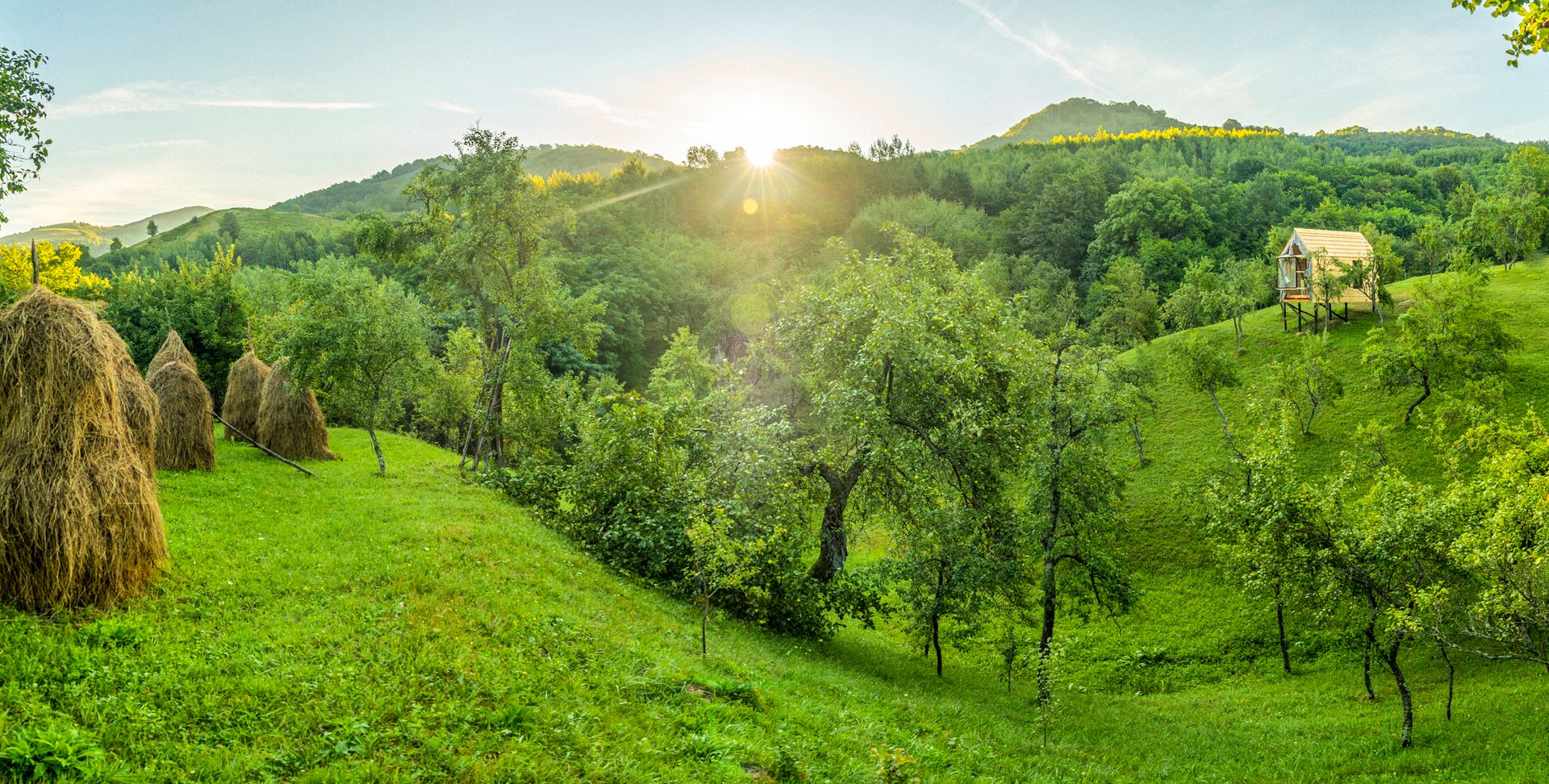
MuMA Hut was born as a result of a collective creative process. It all started when one of the local gamekeepers dreamed up a cabin inspired by the treehouses evoking his childhood, then he offered his own orchard to give home to it. Romanian architect Miodrag Stoianov was in charge of the building’s construction, and many volunteers from other fields joined the implementation of MuMA Hut. Oana Mondoc, the person in charge of Innovation and Community Development at WWF was the glue that brought the team together. Most of the hut was completed with the help of Ioan Moldovan, a very talented wood builder. Further members of the team initiating the project were architect Krisztina Bokos, who helped in the construction details and Alina Floroi, WeWilder’s Cohesion Facilitator. The Hurduzeu family was in charge of volunteers: Daniel, Maria, Ana, Iacob and Ana-Muma, the grandmother.
The cabin was also named after one of the members of the Hurduzeu family, the grandmother called Muma. “She is a very wise lady who encouraged the efforts of the volunteers, too,” stressed Alina. “MuMA Hut was built on the land where she lived all her life. She is the true spirit of the land and we wanted to pay homage to her,” she added.
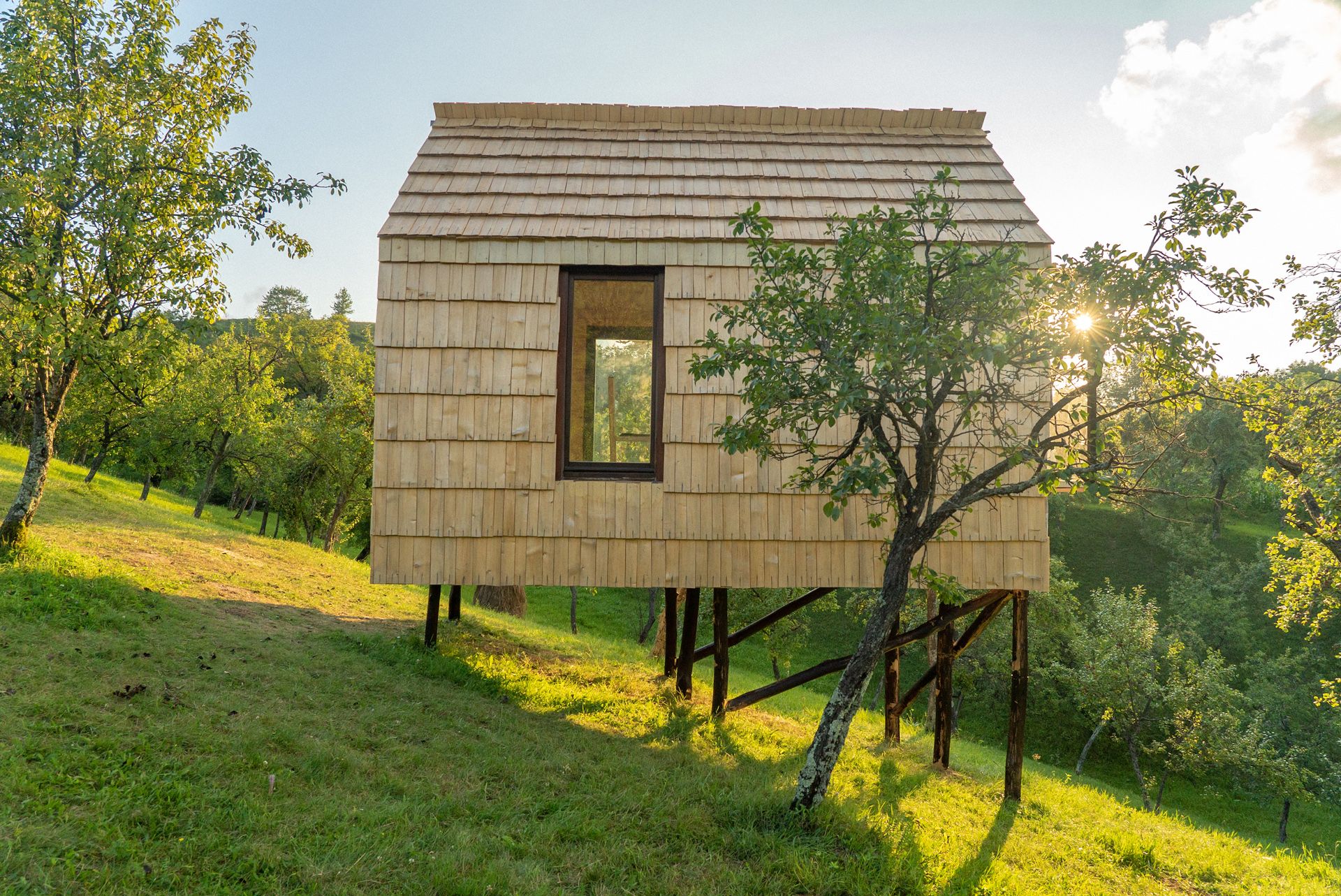
The building of the hut started during the epidemic: with the help of local volunteers, it was erected in the framework of a workshop lasting from May to August 2020. The process is a good example of practices where the presence of volunteers increases locals’ trust.
Not only the location and the process of construction, but the design of the cabin is also outstanding. In addition to having it built from locally sourced wood, its clean and minimalistic look is also paired with traditional architectural solutions: the cabin rests on acacia pillars, while the roof and the façade are clad in hand-crafted wood shingles. They opted for glass wool as an insulation material. Further characteristic elements of the MuMa hut include the giant windows that connect it to the neighboring land.
“The house aims to be an example in terms of the materials used and the traditional practices applied. The work process is reminiscent of the old days: the locals provided food and accommodation for the volunteers. It is an ambitious project that, in the lack of funding for manpower and food for the works, revived the old practice called „Clacă”, a gathering of people that built an asset for someone in the community. With this experimental approach, WWF, together with the MuMA Hut team, is trying to form models and inspiration that gives trust at the local level and short-circuits the economic and financial barriers that rural areas and society face,” Oana told us.
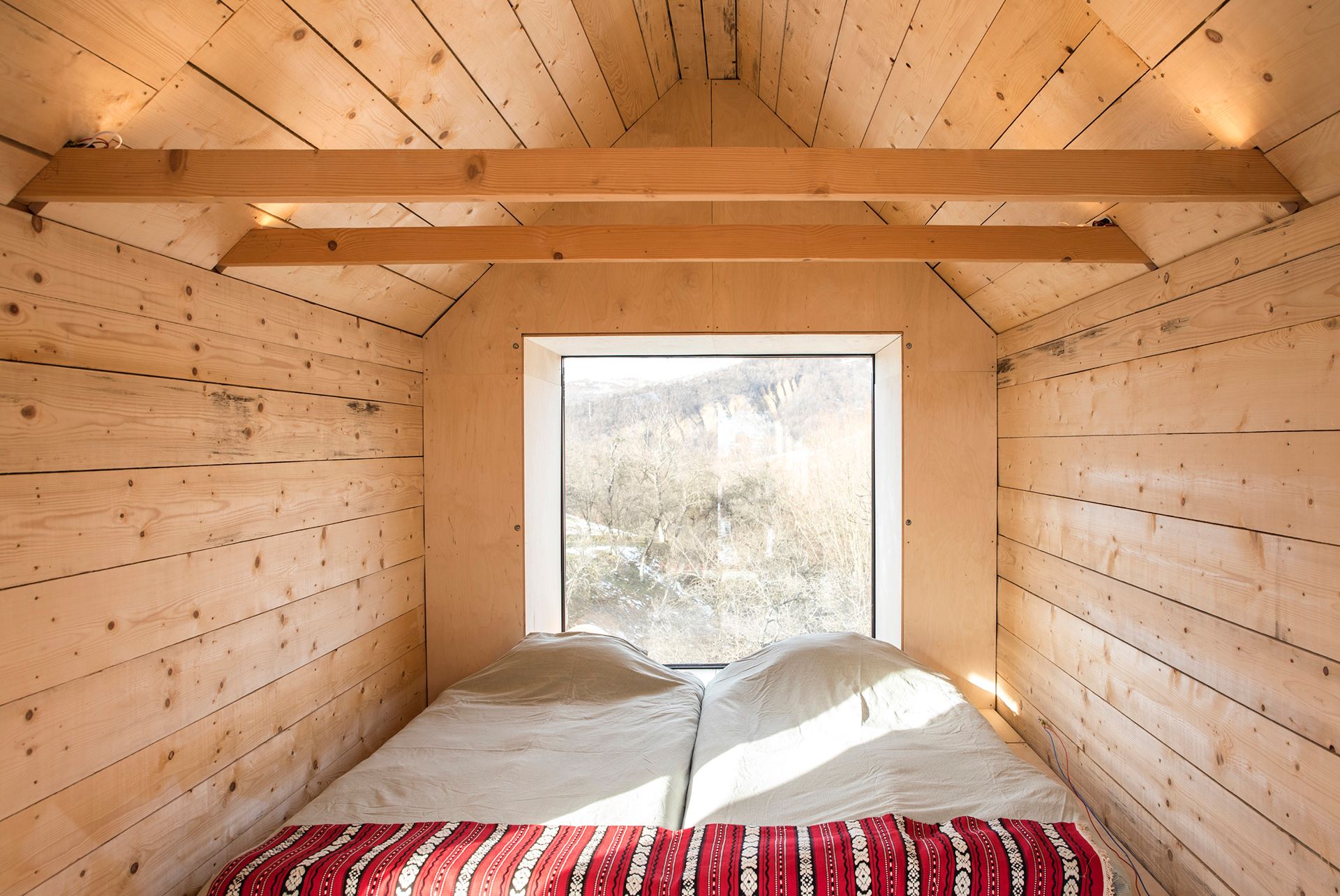
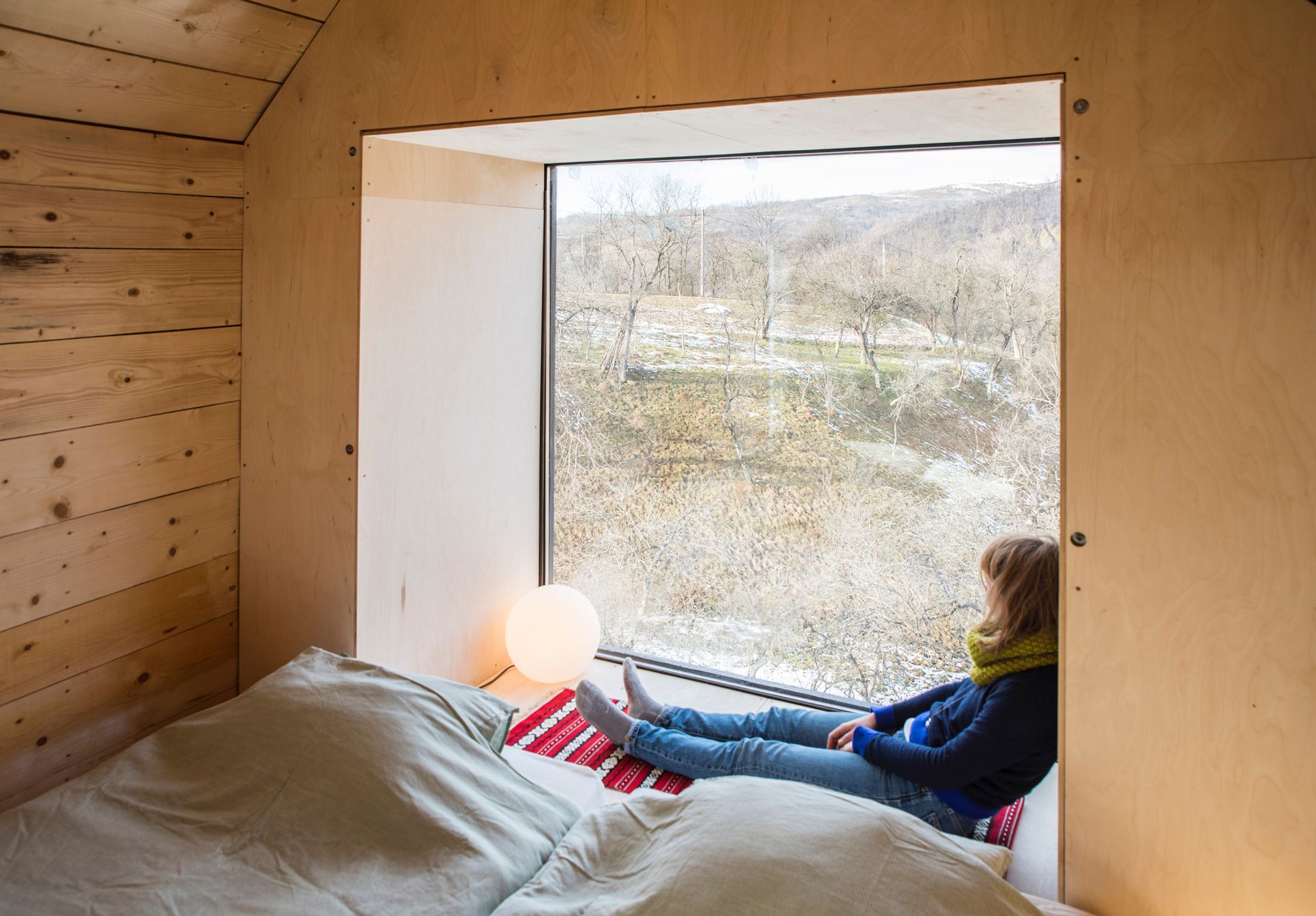
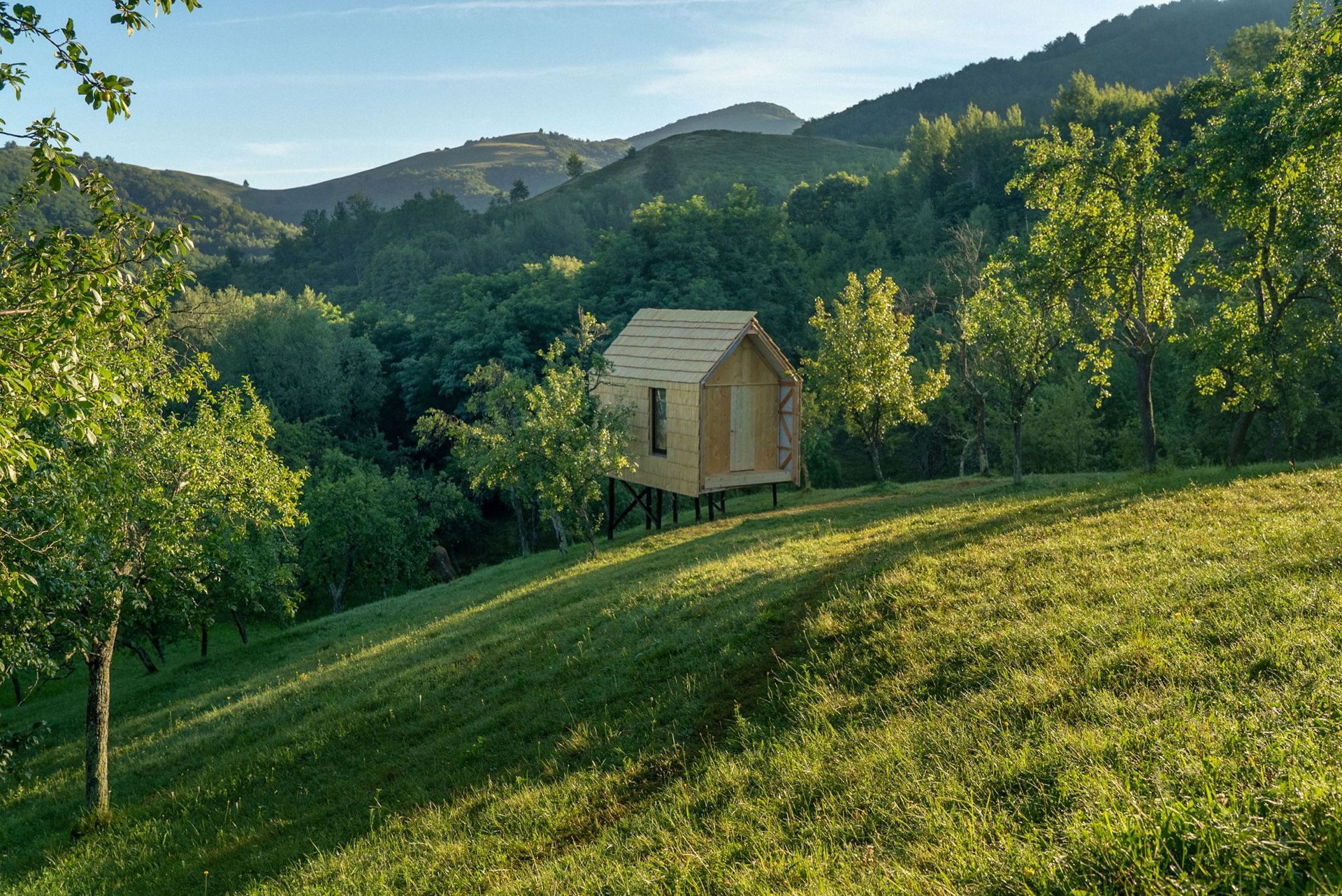
The initiators plan to build additional huts in the upcoming years with locals near the MuMa Hut, and they hope the project will inspire campuses in other areas where WWF Romania works, such as the Danube Delta or Maramures.
If you’d like to try the MuMa Hut, you can book it at the website of the initiative. The cabin is perfect for couples, friends or families traveling with one child, and there’s a bathroom nearby with a hot water shower, once again following the concept of the hut: when showering, one can gaze at the neighboring trees while standing on the floor made of the rocks of the river.
Photos: Eduard Tersak, Răzvan Dima
WeWilder | Web | Facebook | Instagram
Participants of the project: Miodrag Stoianov, Oana Mondoc, Daniel Hurduzeu, Alina Floroi, Ioan Moldovan, Krisztina Mária Bokos, Felix Pantalici, Raoul Chiricheș, Florin Gherman, Pepe Peralta Guerrero, Buse Ioan, Joachim Cotaru, Gabi Cotaru, Marijus Pudar, Maria Sgîrcea, Vlad Servan, Filip Baciu, Marcel Baciu, Răzvan Dima, Nea Ilie, Muma Ana, Iacob Hurduzeu, Ana Hurduzeu, Maria Hurduzeu, Ion Vela, Dl. Ion, Matei Miculescu, Zeno Rumpel, Tavi Bota, Nicolae Lupu, Mihai Veg, Andrei Tache, Ioana Covali, Călin Țâru, Robert Böhm
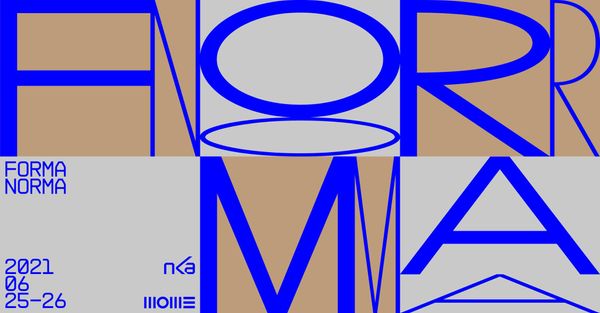
Industrial designer career paths are presented in the Forma Norma program series

Post-Covid optimism in a summer collection | Kamay Ko










